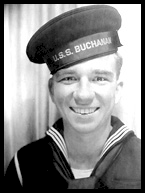A sailor, his ship and the Panama Canal
This
presentation is dedicated to Ken Sederquist, USN LCDR (Retired), who
served from 1934 – 1961, and passed away in 2003. Please
visit http://www.OrdersToPearlHarbor.com
for a video, story, and tributes to the Greatest Generation.
 |
Seaman 1st Class, USS Buchanan (12/31/1934 -11/16/1935)
Aviation Metalsmith 1st Class Fleet
Air Base Coco Solo,
|
|
Coco Solo: designated Naval Air Station, then Fleet Air Base, then Naval Air Station In the Canal Zone during WWI, the navy maintained a Naval Air Station (NAS) for patrol planes and a submarine base at Coco Solo. In January 1930, in accordance with the growth of carrier aviation in the fleet, all carrier squadrons were transferred to Commander Air Battle Force. Naval Air Stations were designated Fleet Air Bases (FAB). Coco Solo became a Fleet Air Base to support an increase in the air facilities to accommodate seven squadrons of patrol planes, with a supporting industrial establishment capable of complete engine overhaul. In November 1942, Coco Solo was redesignated to a Naval Air Station. -https://www.history.navy.mil/ |
Click on the links below to view photos.
|
USS Buchanan, a 1090-ton Wickes class destroyer, was built at Bath, Maine. She was commissioned in January 1919 and initially operated in the Atlantic and Caribbean areas. In May the new destroyer helped provide route protection for the trans-Atlantic crossing of the Navy's NC flying boats. Buchanan transited the Panama Canal in July 1919 to join the Pacific Fleet, serving along the West Coast until she was placed out of commission in June 1922. Recommissioned in April 1930, Buchanan was assigned to the Battle Force and continued her work in the Pacific for seven more years. She also made a training cruise to Alaska in mid-1934. Buchanan was decommissioned in April 1937, as newer destroyers entered the Fleet, but was brought back to active duty at the end of September 1939 after the outbreak of World War II in Europe caused the United States to enlarge the Navy for neutrality enforcement purposes. She operated for the rest of 1939 and well into 1940 in the Caribbean and Gulf of Mexico. In early September 1940 Buchanan was sent to Halifax, Nova Scotia, where she was decommissioned and turned over to Great Britain as part of an agreement by the U.S. to trade fifty old destroyers for basing rights in British possessions in the Western Hemisphere. She became HMS Campbeltown in Royal Navy service. After spending a few months as an escort in the Western Approaches to the British Isles, she was assigned to the Royal Netherlands Navy in January 1941. After returning to the R.N. in September 1941 the destroyer escorted shipping in the Atlantic, where she saw action against German submarines and aircraft. In March 1942 Campbeltown was outfitted as an explosive blockship. On the 28th of that month she played the lead role in a raid on the German base at St. Nazaire, France. After steaming into the the large dry dock there, she was deliberately sunk. Later in the day HMS Campbeltown blew up violently, wrecking the dry dock entrance. Her sacrifice made it impossible to carry out major repairs to heavy ships on the French west coast, thus greatly reducing the risk that the German Navy might employ the battleship Tirpitz in raids against the Allies' Atlantic shipping routes. USS Buchanan was named in honor of Admiral Franklin Buchanan (1800-1874), who was an important figure in the United States and Confederate States Navies. |
Photo
of the Week |Photo
Archives | Main
Show Room | Photo
Room | Military
History
PC History | Sign
Guest Book | Read
Guest Book | Search
CZ Images | CZ
Web Searcher
Gift
Shop | Book
Store | Links